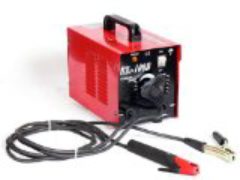MIG welding can be performed safely if precautions are taken every time you MIG weld. The following is an overview of safety procedures to be employed before and during MIG welding operations.
This article, while thorough in scope is not a substitute for proper training or ongoing education. Learn as much as you can about MIG welding prior to welding.
The first thing to do prior to MIG welding is make sure you are familiar with the equipment. Read the safety manuals. Always operate the equipment in a way deemed safe by the manufacturer.
Once familiar with our MIG welder, we can turn our attention to Personal Protective Equipment.
When MIG welding, always wear a welding helmet to protect your head, face and especially your eyes. Excessive exposure to the ultraviolet light rays emitted during MIG welding can cause serious damage to the eyes and in extreme cases blindness. Arc flash also known as welders flash or “arc eye” is a painful condition of the eye sometimes experienced by welders who have not used proper eye protection. Next, you want to wear protective clothing. The clothing will protect not only against molten metal but also against infrared light rays emitted while MIG welding. Excessive exposure to infrared light rays can cause burning of the skin so you need to cover up as much as possible. Protective clothing comes in all types including leather welders jackets, leather bibs, flame retardant coveralls and leather aprons that look like bib overalls. We suggest always wearing flame retardant coveralls to achieve the most coverage. Always wear welders gloves while MIG welding. You should also wear leather shoes to protect your feet from falling molten metal. Another option to protect your feet are leather shoe covers available at most welding supply houses. If you refuse to wear leather gear, you should at least be sure your clothes are cotton and not synthetic as synthetics tend to melt when exposed to high heat and can cause burns. It is advisable to wear a respirator when welding to protect you from breathing in the welding smoke and fumes.
We have covered equipment and personal protective equipment. Now we will turn our attention to the work area.
Always work in a well ventilated area. Welding smoke and fumes can cause serious permanent damage and even death in extreme cases. A commercial quality welding smoke and fume extractor is always a good choice if your budget allows it. Flying sparks can cause a fire very quickly so be sure the work area is free of flammable items like paper, sawdust or cardboard. Be sure any flammable materials are at least 35 feet away from the work area. Have a CO2 fire extinguisher close by at all times. Water extinguishers are not safe for welding because they can be an electrocution hazard when used near electrical equipment. On that note, be sure that the floor is dry to avoid possible electrocution or slipping on the wet surface. Additionally, you can protect yourself from electrocution by insulating yourself from the work and ground. Use non-flammable, dry, insulating material or use dry rubber mats or other dry insulating material large enough to cover the full area of contact with the work or ground.
Be sure that the MIG welder is set up properly and that all connections are properly made and that the gas cylinder is held in place by a safety chain. The gas cylinder should not be near any heat sources and care should be taken to be sure it does not receive any mechanical shocks. Be sure you are wearing your protective clothing. Be sure your area is free of flammables and you have a fire extinguisher handy. You are now ready to MIG weld. Do not attempt to weld galvanized steel. Galvanized steel has a zinc coating that produces a poisonous gas when it is burned. The gas produced can also cause cancer so just avoid galvanized steel altogether. On a final note, people with pacemakers should not go anywhere near any arc welding operations as the magnetic fields created can disrupt the normal operations of these and other implanted medical devices. If you follow these simple rules, you should be able to MIG weld safely and worry free.


I never knew that welding smoke and fumes can even cause death aside from permanent damage on a welder, so it is a must to have the project in a well-ventilated area. I will share this information with my best friend since I heard that he is going to hire a welder next month. Actually, I don’t have an idea what project he is working on, but this tip will help him keep himself and the worker that he will be hiring safe during the process. Thanks for the tips.